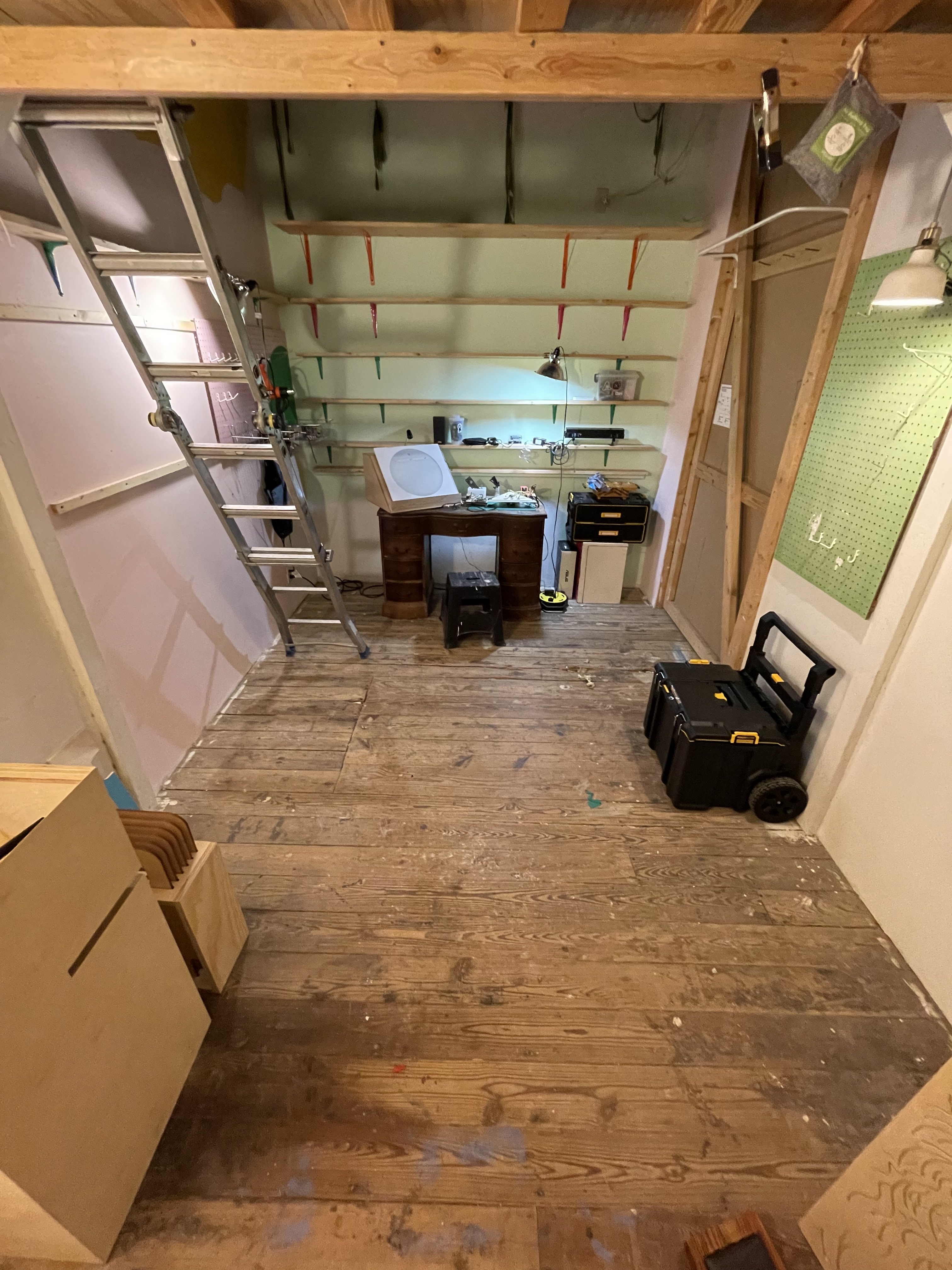New Studio space! I just moved some things into a workspace at The Museum of Human Achievement.
 Now I am deciding what to work on next. I think there was potential in the installation I did for my graduate thesis show, but it was missing some important pieces to be effective. The first think it’s missing is a legible mini-map. Navigating a maze that is a tree structure is incredibly frustrating. It’s maybe the worst possible level design. people get trapped in branches too easily looking for the one door back up. I’m experimenting with maps in the web game using the api, but it’s very difficult, as I’ve said before, to automatically lay these maps out. You really need a force-directed nodemap, which clashes stylistically with the patterned-tiles-on-a-grid style. I’m playing now with some nodemaps using D3, and I’m going to functionally solve the problem first and then deal with the aesthetics.
Now I am deciding what to work on next. I think there was potential in the installation I did for my graduate thesis show, but it was missing some important pieces to be effective. The first think it’s missing is a legible mini-map. Navigating a maze that is a tree structure is incredibly frustrating. It’s maybe the worst possible level design. people get trapped in branches too easily looking for the one door back up. I’m experimenting with maps in the web game using the api, but it’s very difficult, as I’ve said before, to automatically lay these maps out. You really need a force-directed nodemap, which clashes stylistically with the patterned-tiles-on-a-grid style. I’m playing now with some nodemaps using D3, and I’m going to functionally solve the problem first and then deal with the aesthetics.
Of course, I could just work on something new. I haven’t worked on the roguelike game much in the last few weeks, I could return to that, or I could try to see how many innovations from that could be brought to the Grotto web game (animated tiles, etc. we already copied support for sound using howler.js).
I’ve also been thinking about something I only started to feel out in my thesis installation. I had left a copy of The Elementary Structures of Human Kinship by Claude Levi-Strauss on the installation podium next to the Grotto maps book. My intention was to try to make a connection between the Ancestry Mapping that makes up the architecture of the Grotto dungeon, and the failed structuralist attempt to “one cool trick” chart and simplify the incredible diversity of human family structures. While reading about surname structures of Moravian peasantry, I came across the phrase “after the roof”. The phrase refers to the curious custom of peasants taking on the surname of the man who had built the house that they lived in- meaning that a new husband might take on the surname of the late husband of the widow he married, or a man might take on the surname of his father-in-law. It’s a curious looping back on the idea of names-as-architecture in Grotto, arriving at architecture-as-name, and harmoniously enough, it could have happened in my own family somewhere, as they were Moravians. That phrase “after the roof” has been stuck in my head since, and I’m starting to think of a way to express it in a game system.